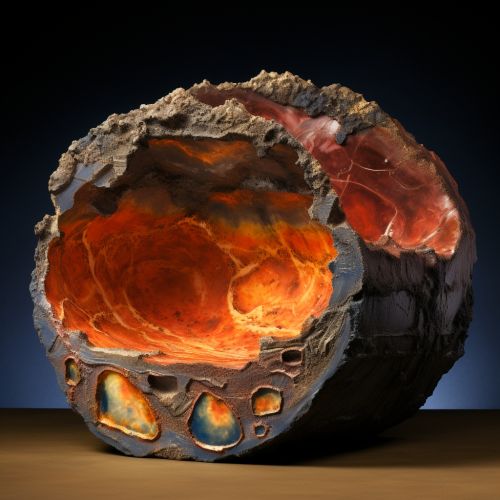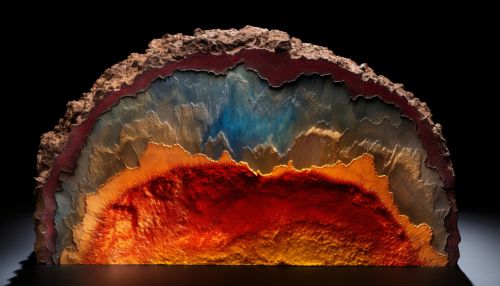Geosphere
Introduction
The Geosphere refers to the solid parts of the Earth, including the crust, mantle, and core. It is one of the Earth's four primary spheres, with the others being the atmosphere, hydrosphere, and biosphere. The geosphere plays a crucial role in the Earth's system, influencing climate, topography, and life forms.


Structure of the Geosphere
The geosphere is divided into three main layers: the crust, the mantle, and the core. Each of these layers has unique physical and chemical properties.
Crust
The Earth's crust is the outermost layer of the geosphere. It is composed of a variety of rocks, including igneous, sedimentary, and metamorphic rocks. The crust is divided into two types: continental and oceanic. Continental crust is thicker and less dense than oceanic crust, which is thinner but denser.
Mantle
The mantle lies beneath the crust and is the thickest layer of the geosphere. It is composed primarily of silicate minerals, and its structure is divided into the upper and lower mantle. The upper mantle, along with the crust, forms the lithosphere, which is broken into tectonic plates.
Core
The Earth's core is the innermost layer of the geosphere, composed primarily of iron and nickel. It is divided into two parts: the outer core, which is liquid, and the inner core, which is solid.
Processes of the Geosphere
The geosphere is dynamic and constantly changing due to various geological processes. These include plate tectonics, volcanism, and erosion.
Plate Tectonics
Plate tectonics is the theory that explains how the Earth's lithosphere moves. This movement can cause earthquakes, form mountains, and create oceanic trenches.
Volcanism
Volcanism refers to the eruption of molten rock, or magma, onto the Earth's surface. This process contributes to the formation of new crust and shapes the Earth's topography.
Erosion
Erosion is the process of wearing down and carrying away rocks and soil. It is primarily caused by water, wind, and ice. Erosion plays a significant role in shaping the Earth's surface features.
Interaction with Other Spheres
The geosphere interacts with the other spheres of the Earth system in various ways. For instance, the geosphere and biosphere interact through the process of weathering, where organisms can contribute to the breakdown of rocks. The geosphere and hydrosphere interact through the water cycle, where water erodes rocks and transports sediments. The geosphere and atmosphere interact through volcanic eruptions, which can release gases into the atmosphere.
